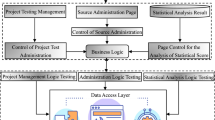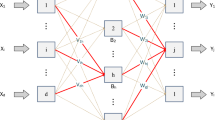Abstract
Different machine learning algorithms predict the application effect of perovskite materials in sports training equipment. The sensitivity to material data is different on different ranges of data sets. Therefore, the algorithm needs to be selected according to specific material data samples. This study compares the prediction performance of neural network prediction algorithm (NN), genetic algorithm, and support vector machine-based machine learning algorithm (SVM) and uses statistical analysis to perform data analysis and draw corresponding curves. Moreover, this study uses a single perovskite material to verify the algorithm performance. In addition, based on the real data, the three machine learning algorithms of this study are applied to the related performance prediction, and the comparative analysis method is used to analyze the prediction performance of the machine learning algorithm. Through data analysis and chart analysis, we can see that machine learning algorithms have a certain effect in the application prediction of perovskite materials in sports training equipment. Among the three machine learning algorithms selected in this study, the performance of the machine learning algorithm based on support vector machine in all aspects is more excellent.
















Similar content being viewed by others
References
Seko A, Hayashi H, Nakayama K et al (2017) Representation of compounds for machine-learning prediction of physical properties. Phys Rev B 95(14):144110
Lee J, Seko A, Shitara K et al (2016) Prediction model of band gap for inorganic compounds by combination of density functional theory calculations and machine learning techniques. Phys Rev B 93(11):115104
Taffese WZ, Sistonen E, Puttonen J (2015) CaPrM: Carbonation prediction model for reinforced concrete using machine learning methods. Constr Build Mater 100:70–82
Malhotra R (2015) A systematic review of machine learning techniques for software fault prediction. Appl Soft Comput 27:504–518
Goetz JN, Brenning A, Petschko H et al (2015) Evaluating machine learning and statistical prediction techniques for landslide susceptibility modeling. Comput Geosci 81:1–11
Mannodi-Kanakkithodi A, Pilania G, Huan TD et al (2016) Machine learning strategy for accelerated design of polymer dielectrics. Sci Rep 6:20952
Faber FA, Hutchison L, Huang B et al (2017) Prediction errors of molecular machine learning models lower than hybrid DFT error. J Chem Theory Comput 13(11):5255–5264
Pilania G, Mannodi-Kanakkithodi A, Uberuaga BP et al (2016) Machine learning bandgaps of double perovskites. Sci Rep 6:19375
Ghahramani Z (2015) Probabilistic machine learning and artificial intelligence. Nature 521(7553):452–459
Ramprasad R, Batra R, Pilania G et al (2017) Machine learning in materials informatics: recent applications and prospects. npj Comput Mater 3(1):1–13
Meredig B, Agrawal A, Kirklin S et al (2014) Combinatorial screening for new materials in unconstrained composition space with machine learning. Phys Rev B 89(9):094104
Hansen K, Biegler F, Ramakrishnan R et al (2015) Machine learning predictions of molecular properties: accurate many-body potentials and nonlocality in chemical space. J Phys Chem Lett 6(12):2326–2331
Hengl T, de Jesus JM, Heuvelink GBM et al (2017) SoilGrids250m: global gridded soil information based on machine learning. PLoS ONE 12(2):0169748
Maggo S, Gupta C (2014) A machine learning based efficient software reusability prediction model for java based object oriented software. Int J Inf Technol Comput Sci (IJITCS) 6(1):1–12
Nickel M, Murphy K, Tresp V et al (2015) A review of relational machine learning for knowledge graphs. Proc IEEE 104(1):11–33
Coley CW, Barzilay R, Jaakkola TS et al (2017) Prediction of organic reaction outcomes using machine learning. ACS Central Sci 3(5):434–443
Seko A, Maekawa T, Tsuda K et al (2014) Machine learning with systematic density-functional theory calculations: application to melting temperatures of single-and binary-component solids. Phys Rev B 89(5):054303
Liu Y, Zhao T, Ju W et al (2017) Materials discovery and design using machine learning. J Materiomics 3(3):159–177
Pilania G, Gubernatis JE, Lookman T (2017) Multi-fidelity machine learning models for accurate bandgap predictions of solids. Comput Mater Sci 129:156–163
Ma X, Li Z, Achenie LEK et al (2015) Machine-learning-augmented chemisorption model for CO2 electroreduction catalyst screening. J Phys Chem lett 6(18):3528–3533
Butler KT, Davies DW, Cartwright H et al (2018) Machine learning for molecular and materials science. Nature 559(7715):547–555
Raccuglia P, Elbert KC, Adler PDF et al (2016) Machine-learning-assisted materials discovery using failed experiments. Nature 533(7601):73–76
Grisafi A, Wilkins DM, Csányi G et al (2018) Symmetry-adapted machine learning for tensorial properties of atomistic systems. Phys Rev Lett 120(3):036002
Author information
Authors and Affiliations
Corresponding author
Ethics declarations
Conflict of interest
The authors declared that they have no conflicts of interest to this work. We declare that we do not have any commercial or associative interest that represents a conflict of interest in connection with the work submitted.
Additional information
Publisher's Note
Springer Nature remains neutral with regard to jurisdictional claims in published maps and institutional affiliations.
Rights and permissions
About this article
Cite this article
Zhang, L., Li, N. Material analysis and big data monitoring of sports training equipment based on machine learning algorithm. Neural Comput & Applic 34, 2749–2763 (2022). https://doi.org/10.1007/s00521-021-05852-8
Received:
Accepted:
Published:
Issue Date:
DOI: https://doi.org/10.1007/s00521-021-05852-8




